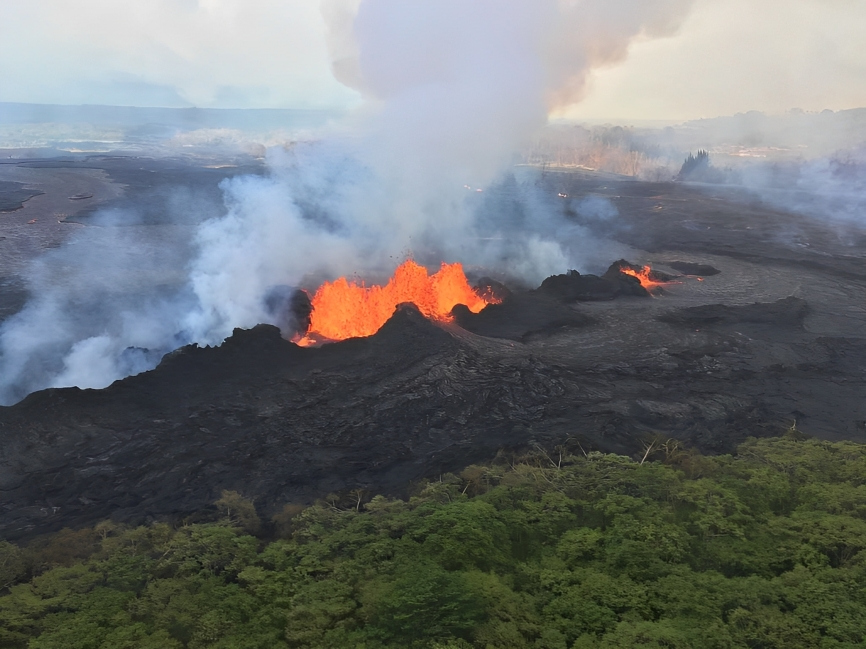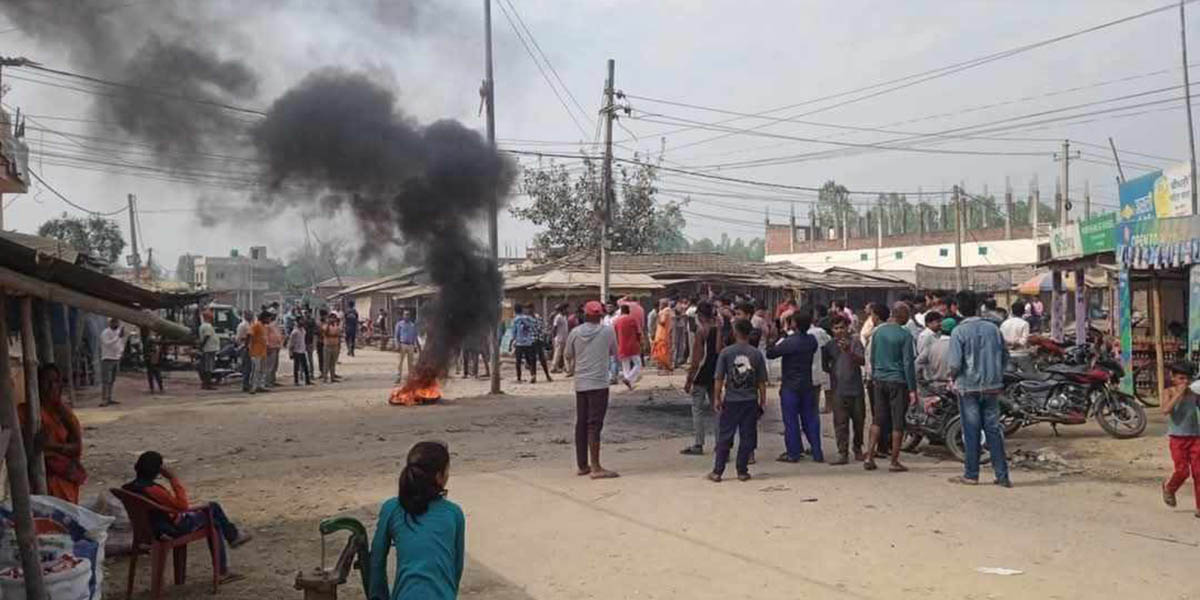Authorities raise the alert level as Hawaii\'s Big Island\'s Kilauea volcano erupts.

(TWN) - After three months of inactivity, Hawaii's second-largest volcano began erupting Wednesday morning, putting on a dynamic flaming show.
Although the activity at the Kilauea volcano is restricted to a section of the Hawai'i Volcanoes National Park that is closed to the public, authorities are closely watching the situation for any threats to the local community. In the past, the volcano's activity has destroyed homes and blasted ash clouds high into the sky.
Webcams that were monitoring the Halemaumau crater in Kilauea's summit caldera showed a glow at 4:44 a.m. local time, which is when the eruption was discovered. Later photos and videos revealed crater fissures, lava lakes filling the crater bottom, and lava explosions in the atmosphere.
"Eruptions have dynamic initial phases. Webcam footage reveals that the Halemaumau crater's fissures are what are causing the lava flows that are seen on the crater floor. The HVO stated that the activity is restricted to Halemaumau and that the dangers will be reevaluated as the eruption continues.

One of the most active volcanoes in the world, Kilauea has erupted numerous times during the last seven decades. A months-long eruption in 2018 produced sluggish lava flows that obliterated 700 dwellings. The volcano has had lava flows cover over 90% of its surface during the past 1,000 years.
A volcanic "warning" and a "red" aviation alert were issued by the Hawaiian volcanic Observatory of the U.S. Geological Survey as a result of possible risks to the land and air, such as ash emissions. Sulfur dioxide and other high concentrations of volcanic gas are of particular concern because they can promote the formation of volcanic smog that is hazardous to nearby people and animals.
Pele's hair, which are thin glass strands generated by gas after an eruption, are also dangerous. These threads occur when gas bubbles burst on the surface of lava, stretching the skin of the lava into long threads that can be "couple feet long," according to the National Park Service.
"Because these strands are so light, they can become airborne and be carried by the wind," according to the service. "... They are both frail and brittle, as well as sharp. They can become trapped in human skin and, much worse, eyes as small bits of glass. To avoid harm from slivers, exercise caution around the fibers."
The Hawaii Emergency Management Agency stated on Twitter that there is "NO indication" that populated areas are in danger.
YOU MAY ALSO LIKE THIS
Robbers Loot Jewelry Shop in Mahottari; Traders Shut Down Market Deman..
Janakpurdham , March 17, 2025 : Traders in Mahottari have launched protests after a group of robbers looted a jewe..
8 Month Ago
Trump and Putin to Discuss Ukraine on Tuesday
Washington,March 17, 2025 – U.S. President Donald Trump has announced plans to speak with his Russian counterpart,..
8 Month Ago
One Injured in Police Firing at Bhathihan, Dhanusha
Dhanusha, March 17 – A clash erupted once again on Monday in Bhathihan, located in Sabaila Municipality, Dhanusha, over the ..
8 Month Ago





